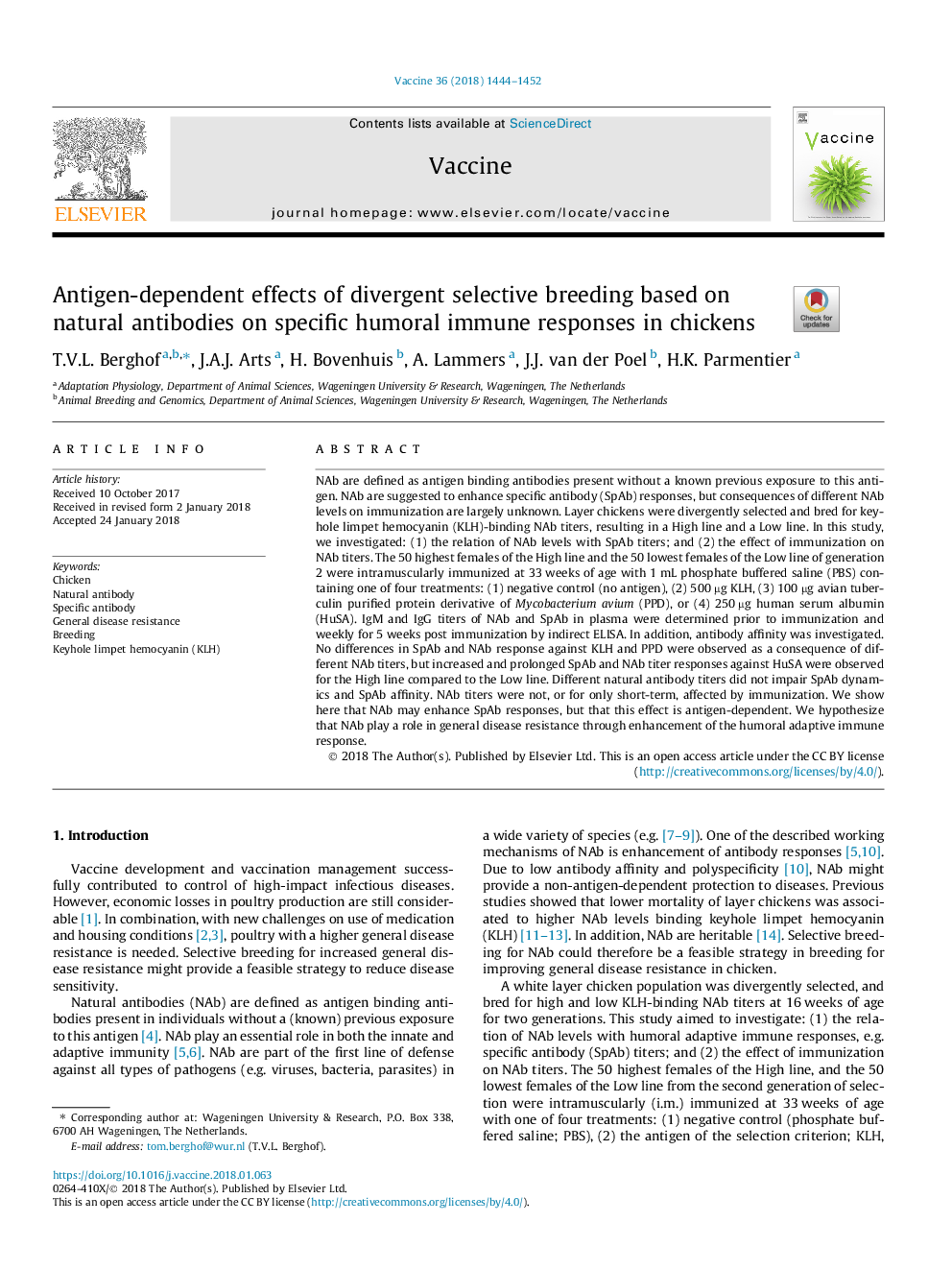| Article ID | Journal | Published Year | Pages | File Type |
|---|---|---|---|---|
| 8485962 | Vaccine | 2018 | 9 Pages |
Abstract
NAb are defined as antigen binding antibodies present without a known previous exposure to this antigen. NAb are suggested to enhance specific antibody (SpAb) responses, but consequences of different NAb levels on immunization are largely unknown. Layer chickens were divergently selected and bred for keyhole limpet hemocyanin (KLH)-binding NAb titers, resulting in a High line and a Low line. In this study, we investigated: (1) the relation of NAb levels with SpAb titers; and (2) the effect of immunization on NAb titers. The 50 highest females of the High line and the 50 lowest females of the Low line of generation 2 were intramuscularly immunized at 33â¯weeks of age with 1â¯mL phosphate buffered saline (PBS) containing one of four treatments: (1) negative control (no antigen), (2) 500â¯Âµg KLH, (3) 100â¯Âµg avian tuberculin purified protein derivative of Mycobacterium avium (PPD), or (4) 250â¯Âµg human serum albumin (HuSA). IgM and IgG titers of NAb and SpAb in plasma were determined prior to immunization and weekly for 5â¯weeks post immunization by indirect ELISA. In addition, antibody affinity was investigated. No differences in SpAb and NAb response against KLH and PPD were observed as a consequence of different NAb titers, but increased and prolonged SpAb and NAb titer responses against HuSA were observed for the High line compared to the Low line. Different natural antibody titers did not impair SpAb dynamics and SpAb affinity. NAb titers were not, or for only short-term, affected by immunization. We show here that NAb may enhance SpAb responses, but that this effect is antigen-dependent. We hypothesize that NAb play a role in general disease resistance through enhancement of the humoral adaptive immune response.
Related Topics
Life Sciences
Immunology and Microbiology
Immunology
Authors
T.V.L. Berghof, J.A.J. Arts, H. Bovenhuis, A. Lammers, J.J. van der Poel, H.K. Parmentier,
